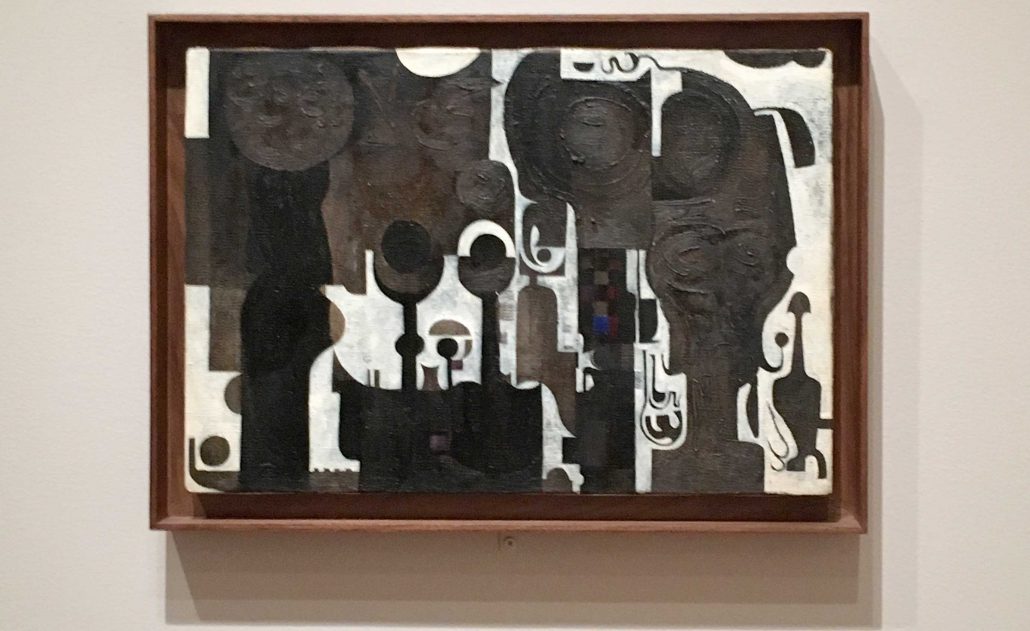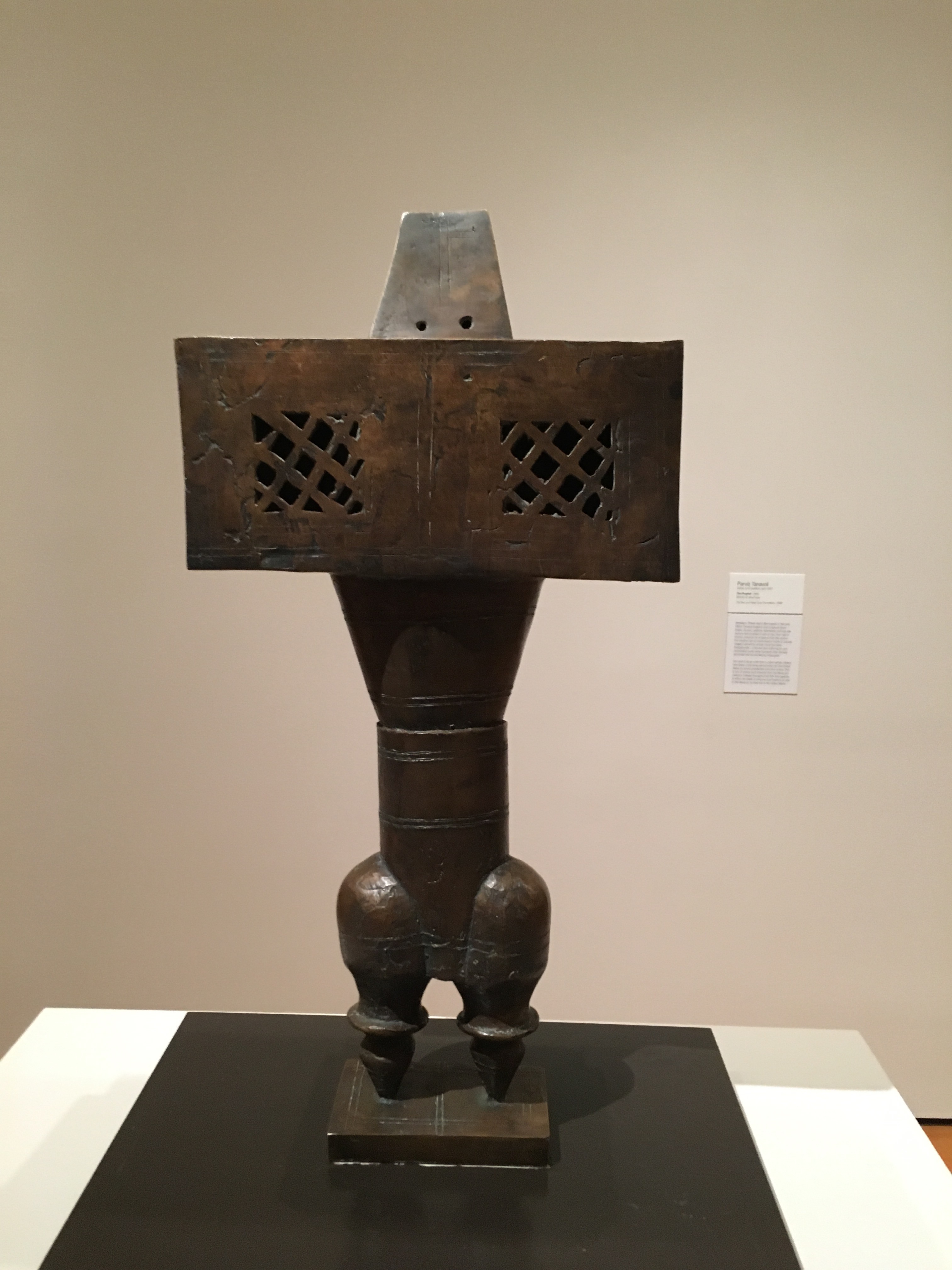Building the Legal Case to Challenge Trump’s Immigration Ban
President Trump’s latest Proclamation is a brazen attempt to rewrite US immigration laws under the guise of protecting Americans during the COVID-19 pandemic. The Proclamation bans most noncitizens who will enter the United States as immigrants for 60 days from April 23, 2020. Confirming the sham, Senior White House adviser Stephen Miller, according to a leaked private conference call recording, told supporters that Trump’s order to suspend immigration is part of a larger strategy to reduce overall immigration. He said that “the most important thing is to turn off the faucet of new immigration labor” and that the temporary ban would limit “chains of follow-on migration.”
Following my initial reaction to the Proclamation, in this blog I point out all its inherent contradictions to make the case that it is legally infirm and is vulnerable to challenges in court.
Although the Proclamation purports to halt permanent immigration for 60 days it leaves open the possibility of revaluation on day 50 and extending the ban. The Proclamation also leaves open the possibility of introducing other measures possibly impacting the H-1B and L visa programs. There are indications that the administration will extend the Proclamation to also limit temporary work visas as well. A draft of another version of the order would have banned noncitizens seeking entry on B, H, E, J, L and O visas, and so it would not be unexpected if the ban is eventually extended to nonimmigrant visa entrants. It is ironic that even immigration restrictionists are critical of the Proclamation as it does not go far enough, and so they will continue to exert pressure to extend the order and expand the restrictions.
Paradoxically, the Proclamation places green card holders on a lower pedestal than temporary workers tied to an employer under a pseudo economic theory that there is no way to protect Americans from the threat of competition from newly minted green card holders who can seek jobs in any sector. This false assumption is made even though some of the would be immigrants who have been banned were sponsored by employers because of their skills and who tested the US labor market for American workers prior to filing a green card application on their behalf. The Proclamation further cruelly blocks spouses and children of green card holders and even those who have won approvals based on their extraordinary ability or for being outstanding professors or researchers. Spouses and minor children of US citizens are exempted and so are physicians and nurses, along with others coming to perform work related to COVID-19.
But these exceptions are small crumbs to make it seem that the ban has a rationale, although this is clearly not so. The idea that a 60 day pause on permanent immigration will improve the unemployment situation in the US is farcical especially in light of the leaked Miller call that this is part of the administration’s long term strategy to lower immigration levels. An editorial from of the Wall Street Journal published the day before the Proclamation was promulgated makes a compelling case that immigrants do not take away jobs, and it is in fact the reverse. Below is an extract:
Nearly all of the economic evidence shows that immigrants enhance American growth and jobs. Former Federal Reserve economist Madeline Zavodny, now at the University of North Florida, examined state employment levels and immigration for the National Foundation for American Policy in 2018. States with surges of immigration like Texas and Iowa had low jobless rates. “Having more immigrants reduces the unemployment rate and raises the labor force participation rate of U.S. natives within the same sex and education group,” she found.
Rather, the purpose of the Proclamation is political posturing to please Trump’s political base, while causing untold pain and suffering on people, both US citizens and would be immigrants, who will be prevented from uniting as a result of this ban. According to this chilling NY Times story, an angry and brooding Trump impulsively thought of issuing the order when he realized that he was not polling well in battleground states.
Although Trump claims to have derived the authority to ban immigrants under section 212(f) of the Immigration and Nationality Act (INA), which he relied upon when he issued the travel bans and the third watered down version was upheld by the US Supreme Court in Trump v. Hawaii, there may be a basis to distinguish the latest Proclamation from his prior travel ban. The president cannot wholesale re-write laws enacted by Congress, and decide the sort of immigrant he prefers over another based on personal whim and prejudice. For example, EB-5 investors have been exempted from the ban while other would be immigrants who have properly obtained approvals under the law, and many who have waited for years in green card queues, have been improperly banned. While spouses and children of US citizens have been exempted, parents of US citizens have not. Diversity lottery winners are also included in the ban, and Trump’s hostility to them is apparent when he referred to them as hailing from “shithole” countries. Trump’s disapproval of family-based immigration, which he pejoratively refers to chain migration, has no relation to protecting American workers during the COVID-19 crisis.
Although the Supreme Court upheld Trump’s travel ban that focused on mainly Muslim countries, and which is why it is also appropriately called the Muslim ban, it is not a foregone conclusion that courts will uphold this ban as it completely rewrites the law based on subjective opinions and pseudo economic theories that are not consistent with the INA. Trump has used INA § 212(f) to reshape immigration laws enacted by Congress that have nothing to do with travel bans and national security. These initiatives have received push back from lower courts. On November 9, 2018, Trump issued another Proclamation invoking INA § 212(f), which banned people who cross the Southern border outside a designated port of entry from applying for asylum in the United States. The Department of Justice and Department of Homeland Security followed by jointly issuing a rule implementing the proclamation. The key issue is whether INA § 212(f) allowed a president like Trump with predisposed views against granting asylum to override entire visa categories or change the US asylum system? INA § 208(a)(1) categorically allows any alien who is physically present in the United States to apply for asylum regardless of his or her manner of arrival in the United States “whether or not at a designated port of arrival.” Trump attempted to change that by virtue of the authority given to him in INA § 212(f) by not allowing people who cross outside a port of entry from applying for asylum. Never mind that the administration had virtually closed the designated ports of entry for asylum seekers, which forced them to cross the border through irregular methods. In East Bay Sanctuary Covenant v. Trump, the Ninth Circuit concluded that the Trump administration had unlawfully done what the “Executive cannot do directly; amend the INA”. Indeed, even in Trump v. Hawaii, the administration successfully argued that INA § 212(f) only supplanted other provisions that allowed the administration to bar aliens from entering the United States, but did not expressly override statutory provisions. Thus, INA § 212(f) could not be used as a justification to override INA § 208. The Supreme Court has temporarily stayed the injunction in a related case that prohibits asylum seekers on the Southern border from applying for asylum in the US if they have not applied in Mexico or Guatemala – and thus by implication East Bay Sanctuary Covenant v. Trump – from taking effect until the government’s appeal in the Ninth Circuit and Supreme Court is decided. There has been no ruling on the merits of the case.
On October 3, 2019, Trump yet again invoked INA § 212(f) by issuing a Proclamation to ban intending immigrants from entering the United States if they did not have health insurance within 30 days of their arrival in the United States. Under the health insurance proclamation, an intending immigrant who has satisfied all statutory requirements set out in the INA will nevertheless be permanently barred from entering the United States if that person cannot show, to the satisfaction of a consular officer, that he or she either “will be covered by approved health insurance” within 30 days of entering the United States, or “possesses the financial resources to pay for reasonably foreseeable medical costs.” In Doe v. Trump, a federal district court in Oregon temporarily blocked the health insurance proclamation through a nationwide injunction by relying on East Bay Sanctuary Covenant v. Trump, supra, which specifically held that a president cannot rely on INA § 212(f) to amend the INA. In the health insurance case, Trump’s proclamation contradicts the public charge provision under INA 212(a) (4), which does not have a health insurance requirement. The Ninth Circuit has upheld the temporary order of the Oregon district court, although it has a strong dissent by Judge Bress criticizing the Oregon district court’s finding that INA $ 212(f) was unconstitutional under the nondelegation doctrine. Under this doctrine, associated with separation of powers, Congress cannot delegate legislative powers to the president under INA § 212(f). This argument needs to be watched more closely as it is bound to play out further when the administration defends its authority under INA § 212(f) in this case and other cases. The Supreme Court has not yet intervened in this case.
On January 31, 2020, Trump used his extraordinary broad powers under INA § 212(f) to expand his travel ban to six additional countries. The affected countries are Nigeria, Eritrea, Sudan, Tanzania, Kyrgyzstan and Myanmar. The expanded ban comes about three years after the prior ban that was upheld by Trump v. Hawaii. Most of the countries targeted in this ban, like the prior travel ban, are countries with significant Muslim populations. Even Myanmar, where Buddhists constitute the majority, has a significant minority population comprising Muslims including the persecuted Rohingya people. The administration spuriously argued that the new travel ban is vital to national security and the ban will remain “until those countries address their identified deficiencies” related to security and information-sharing issues. Unlike the prior travel ban, the more recent travel ban only restricts immigrants from Burma, Eritrea, Kyrgyzstan and Nigeria. The restrictions on Sudan and Tanzania are narrower as they only apply to immigrants who have won green cards under the diversity program. Like Trump’s latest Proclamation, this travel ban does not apply to nonimmigrants who visit the US temporarily such as tourists, students or workers under specialized work visa programs such as the H-1B for specialty occupations or L-1 for intracompany transferees. As explained in a prior blog, the justification that the administration provided was that it is harder remove immigrants from the US is also spurious from a security perspective since all noncitizens are subject to the same removal process, able to contest the charges against them and are eligible for relief from removal. People placed in removal can remain in the US until they exhaust all their appeals. Also the justification to restrict immigrants from Tanzania and Sudan who have won green card lotteries makes even less sense. Why would one who has won the lottery in Sudan and Tanzania pose more of a risk than someone who is immigrating on another basis? The January 31, 2020 travel ban reflects Trump’s abhorrence against DV lottery winners from poorer countries, and again, like the most recent Proclamation devalues permanent immigration to the US.
Notwithstanding the prior Trump v. Hawaii ruling, it is imperative that the limits to INA § 212(f) be challenged as Trump can use this provision to radically transform immigration laws enacted by Congress, and without going through Congress to amend laws that he does not like. A challenge to the expanded ban will again give courts the ability to examine INA § 212(f). The Supreme Court, disappointingly, held in Trump v. Hawaii that INA § 212(f) “exudes deference to the President” and thus empowers him to deny entry of noncitizens if he determines that allowing entry “would be detrimental to the interests of the United States.” One should however still give credit to prior lower federal court decisions that blocked the first and second versions of the travel ban, on the grounds that Trump exceeded INA § 212(f), which were far worse than the watered down third version that was finally upheld. Although the Supreme Court may have stayed the injunction in East Bay Sanctuary Covenant v. Trump, it has not ruled on the merits of the Ninth Circuit’s reasoning that Trump could not use INA § 212(f) to rewrite asylum law in the INA. The Supreme Court is yet to hear any challenge to the health insurance proclamation. The Ninth Circuit in both these cases did not disapprove of the reasoning by district court judges that Trump overstepped his authority notwithstanding the powers given to him under INA § 212(f). The latest Proclamation banning permanent immigration, if extended beyond 60 days and even expanded to other nonimmigrant visa categories, would provide another basis to test the limits of INA § 212(f) in federal court. Trump has rewritten the immigration law in the Proclamation according to whim and caprice that conflict with existing provisions in the INA. While the INA allows US citizens to sponsor spouses, minor children and parents as immediate relatives, Trump has rewritten the law to exclude parents of US citizens. Under the Proclamation, even adult children and siblings of US citizens have been banned. Similarly, while the INA specifically allows permanent residents to sponsor spouses, minor children and adult unmarried children, the Proclamation excludes them all together. The exception of EB-5 investors from the ban is hardly surprising given the Trump and Kushner family’s involvement in real estate development, which attracts funding from foreign investors.
The first challenge to the Proclamation was filed on April 25, 2020 in the form of an emergency Temporary Restraining Order as part of the challenge to the health insurance proclamation in Doe v. Trump as plaintiffs in the class. They are underaged children of lawful permanent residents who will be adversely impacted by the latest Proclamation if they are unable to obtain immigrant visas before they age out. This is only the opening salvo attacking the Proclamation on a narrow basis, which will inspire others, including state attorney generals to also legally challenge it. In approving Trump’s first travel ban, the majority in Trump v. Hawaii made reference to Korematsu v. United States, This was the shameful Supreme Court case that allowed the internment of Japanese Americans after the attack on Pearl Harbor in 1941. Justice Sonia Sotomayor referencing this decision in her powerful dissent in Trump v. Hawaii. Justice Sotomayor found striking parallels between Korematsu and Trump’s travel ban. For example, they were both based on dangerous stereotypes about particular groups’ inability to assimilate and their intent to harm the United States. In both cases, there were scant national security justifications. In both cases, there was strong evidence that there was impermissible animus and hostility that motivated the government’s policy. The majority rejected the dissent’s comparison of Trump’s supposedly facially neutral travel ban to Korematsu, but still took this opportunity to overrule Korematsu. Yet, when one carefully reviews Trump’s motivations behind the travel bans, especially after the second one and this Proclamation, they are not too different from the motivations that resulted in the forced internment of Japanese Americans. Indeed, Justice Sotomayor astutely reaffirmed that “[t]he United States of America is a Nation built upon the promise of religious liberty.” In her rejection of the legality of the travel ban, she observed that “[t]he Court’s decision today fails to safeguard that fundamental principle. It leaves undisturbed a policy first advertised openly and unequivocally as a ‘total and complete shutdown of Muslims entering the United States’ because the policy now masquerades behind a façade of national-security concerns.”
It is time to revisit the Supreme Court’s overruling of Korematsu in Trump v. Hawaii. In that case, the Supreme Court opined that the first travel ban was facially neutral and took pains to distinguish it from the repugnant Korematsu decision. The subsequent use of Trump’s authority under INA § 212(f) confirms that the first travel ban was not neutral, and this Proclamation, along with other executive orders under INA § 212(f), are strikingly similar to Korematsu as they lack any rationale. Since the first travel ban took effect, thousands of intending immigrants from the banned countries, from infants to elderly parents, have been needlessly impacted and they pose no threat to national security. The latest Proclamation’s justification is economic – the millions of job losses – than health related. The president should not be allowed to rewrite the INA based on periodic downturns in the economy since the last time Congress fixed the number of visas was in 1990, and there have been quite a few economic downturns since. Moreover, the waivers in the travel bans are a sham and are seldom granted. There are no waivers in the most recent Proclamation to those impacted, only exceptions. INA § 212(f) must have limits, courts must hold, including the Supreme Court someday. Miller’s conference call to Trump’s supporters is the smoking gun, and Exhibit A, to show in court that Trump’s latest Proclamation is a chimera – it has nothing to do with COVID-19 but is part of the long term goal of this administration to reduce immigration levels. As president of the United States, Trump is still subject to laws enacted by the US Congress. He cannot be allowed to be King and change them through whim and caprice.









